April 2024 is caesarean awareness month
04.04.2024
For many women giving birth is connected with joyful anticipation. Yet, it also carries certain risks, especially when doctors need to perform a caesarean-section.
Globally, an increasing number of c-sections are performed. While the procedure has often saved the life of mother and child, it also carries certain health risks, such as post-c-section wound infections.
Wound infections range among the most common hospital-acquired infections worldwide [1].
In light of this year’s caesarean awareness month schülke would like to share some insights around caesarean birth and how to avoid post-c-section wound infections.
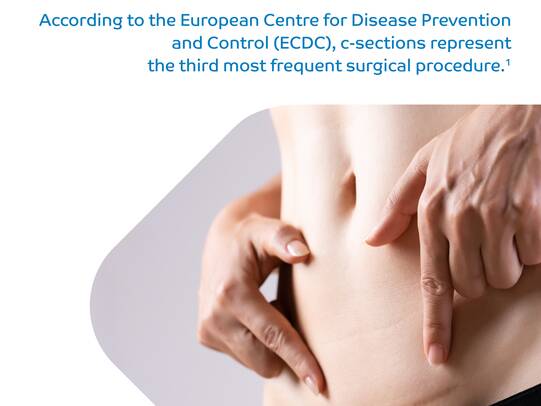
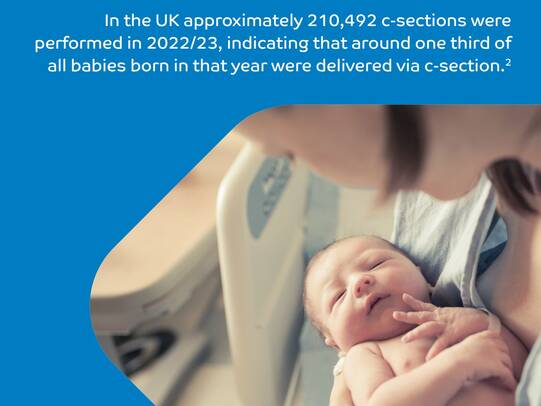
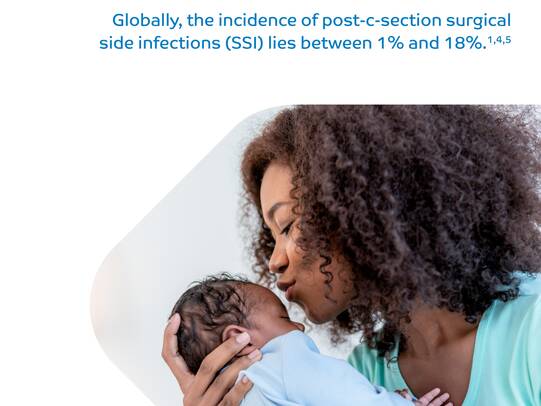
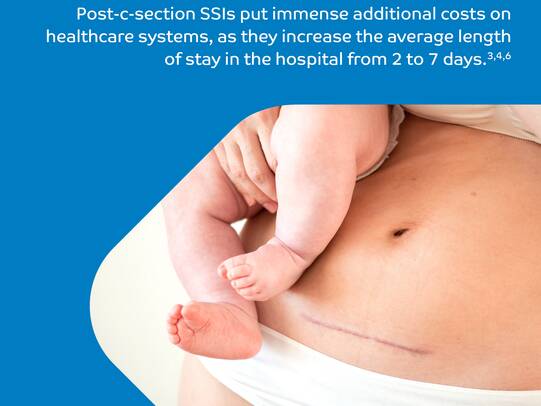
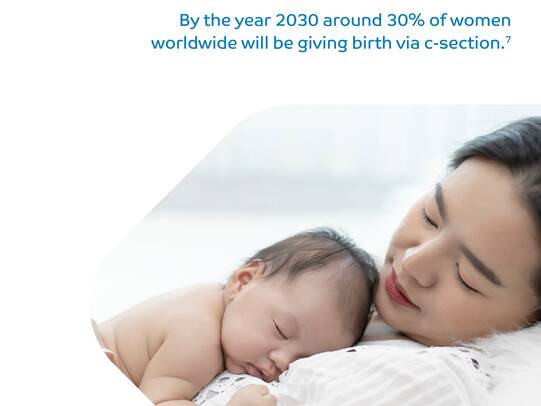
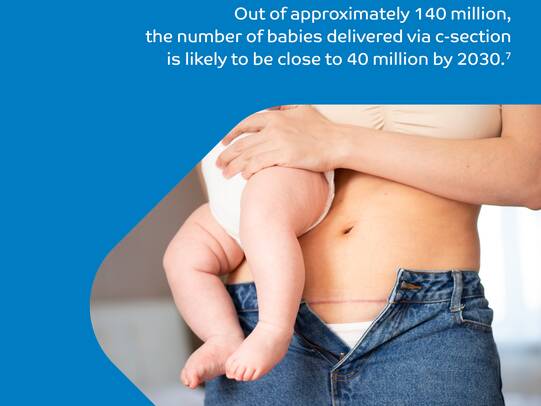
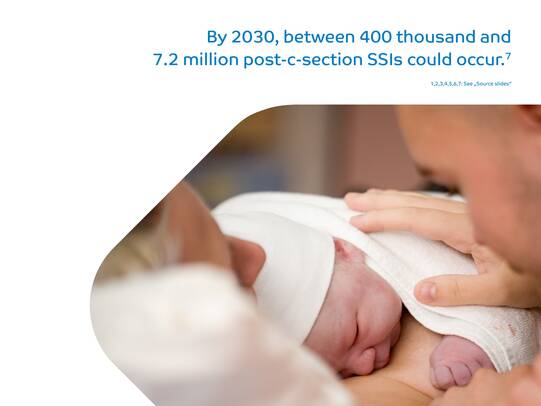







What are possible causes for C-Section wound infections?
Certain factors drive the likelihood of developing a post-c-section SSI, among them are:
- maternal obesity
- hypertensive disorders
- smoking
- multiple vaginal examinations prior to giving birth
- an emergency c-section
- giving birth in a lower income country – which is one of the greatest risk factors [2,3,4].
The number of women experiencing a post-c-section SSI is likely to increase globally, mainly due to the overall rising number of c-sections in recent and coming years [2,5,6].
How to avoid a C-Section wound infection
Effective infection prevention strategies need to be implemented in hospitals to minimize post-c-section SSIs [2,7].
A recent initiative in 6 hospitals in the West England region aims to reduce post-c-section SSIs by implementing an effective infection prevention bundle based on WHO and NICE recommendations [1,8].
This bundle consists of
- alcoholic skin preparation
- the use of a dual ring wound protector for mothers with a BMI > 45
- repeated doses of antibiotics in case of excess blood loss
- and antibacterial suture [9].
Yet, mothers should not only rely on the hospitals to take action, there are some things that they can do themselves to minimize the risk of any post-c-section surgical site infection.
Prior to c-section:
- Shower with soap and water before you come to hospital.
- Do not shave the area of the procedure with a razor up to 24 hours before your delivery, as this increases the risk of an infection.
- Keep yourself warm before and after your arrival in the hospital.
After your c-section:
- Shower as soon as you feel able to, but don’t use soap or other hygiene products on your wound.
- Always wash your hands before touching the wound.
- If your stomach covers your wound, lift it gently and wash the area with clear water.
- Dry the wound by gently patting it with a clean towel – don’t rub it.
- Wear loose fitting, high waisted underwear to prevent pressure on the wound.
schülke offers a wide range of infection prevention solutions:
Sources
Sources text:
[1] WHO, Global Guidelines for the prevention of surgical site infection, 2018, https://iris.who.int/bitstream/handle/10665/277399/9789241550475-eng.pdf?sequence=1
[2] Mojtahedi M F et al., Journal of Hospital Infection, 2023;139:82-92
[3] Erritty M et al., Archives of Gynecology and Obstetrics, 2023;308:1775–1783
[4] Saeed K B M et al. Am J Infect Control, 2019; 47(2):164-169, Epub 2018
[5] European Centre for Disease Prevention and Control. Healthcare-associated infections: surgical site infections. In: ECDC. Annual epidemiological report for 2018-2020. Stockholm: ECDC; 2023
[6] Saeed K B M et al., BMJ Open 2017;7:e013037
[7] Betran A P, et al. BMJ Global Health 2021;6:e005671
[8] Surgical site infections: prevention and treatment NICE guideline Published: 11 April 2019 Last updated: 19 August 2020, www.nice.org.uk/guidance/ng125
[9] Haynes A B et al., N Engl J Med, 2009;360:491-9
Sources Slides:
[1] European Centre for Disease Prevention and Control. Healthcare-associated infections: surgical site infections. In: ECDC. Annual epidemiological report for 2018-2020. Stockholm: ECDC; 2023,
[2} https://digital.nhs.uk/data-and-information/publications/statistical/maternity-services-monthly-statistics/december-2023-experimental-statistics#summary , accessed April 2024
[3] Saeed K B M et al., BMJ Open 2017;7:e013037
[4] Mojtahedi M F et al., Journal of Hospital Infection, 2023;139:82-92
[5] Erritty M et al., Archives of Gynecology and Obstetrics, 2023;308:1775–1783
[6] Jenks P J et al., Journal of Hospital Infection, 2014;86:24-33
[7] Betran A P, et al. BMJ Global Health 2021;6:e005671

























